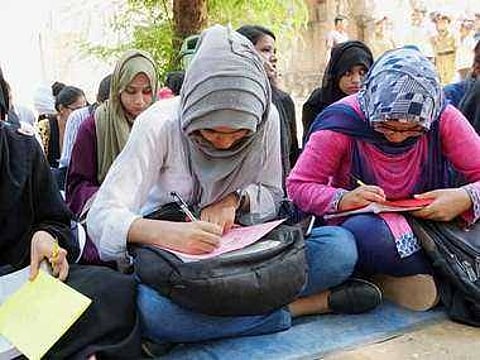
New Delhi - The increase in enrolment of Muslim students in higher education is a positive trend, signalling growing interest in advanced studies. However, a notable gap exists between eligible Muslim students aged 18-23 and their actual enrolment numbers, indicating barriers to accessing higher education. The insights are drawn from the report 'The State of Muslim Education in India: A Data-Driven Report' by researcher Arun C. Mehta.
Based on Unified District Information on School Education (UDISE+) and All-India Survey on Higher Education data, the report highlights disparities in higher education access for Muslim students and suggests solutions to address the gap.
The report uses the Gross Enrolment Ratio (GER) for Muslims in higher education, which has shown improvement over the years, increasing from 8.24 percent in 2016-17 to 8.91 percent in 2020-21. Despite reaching a high of 9.79 percent in 2019-20, there was a subsequent decline.
Despite positive trends, the GER for Muslim students remains significantly below the national average. Bridging this gap is crucial for fostering inclusivity and equal opportunities. Barriers, such as financial limitations, limited access to quality education, and societal influences, hinder Muslim students. The report suggests specific actions:
Financial Support Initiatives: Addressing economic challenges faced by financially disadvantaged Muslim students is crucial to fostering greater inclusivity in higher education. Implementing financial assistance programs involves creating a range of support mechanisms. Scholarships can be specifically designed to cater to the unique needs of Muslim students, considering factors such as cultural considerations and financial constraints. Grants and educational loans further contribute to alleviating the financial burden associated with pursuing higher education. By tailoring these programs to the specific challenges faced by Muslim students, educational institutions and policymakers can encourage and enable a more diverse group of students to pursue advanced studies.
Expansion of Scholarships and Grants: A targeted effort to increase the availability of scholarships and grants exclusively for Muslim students represents a proactive step toward fostering equal educational opportunities. By expanding the pool of financial aid options, institutions and organizations create a more inclusive environment. This not only serves as a powerful incentive for Muslim students to consider higher education but also contributes to breaking down financial barriers that might otherwise impede their enrolment. The broadening of financial aid opportunities can positively impact enrolment rates, promoting diversity and representation in higher education institutions.
Enhancing Access to Quality Education: Improving educational opportunities for Muslim students in rural and underserved areas is a fundamental aspect of creating a more equitable educational landscape. This involves establishing additional schools and educational facilities in these regions. The enhancement of infrastructure and teaching standards is equally crucial, ensuring that students receive a quality education that prepares them for higher academic pursuits. By addressing disparities in educational access, especially in areas with limited resources, the likelihood of students progressing to higher education is significantly improved. This approach not only benefits individual students but also contributes to the overall development and empowerment of marginalized communities.
These proposed initiatives by the report collectively aim to address the multifaceted challenges faced by Muslim students, fostering an environment where they have equal access to educational opportunities and can pursue higher studies without undue hindrances.
Also Read-
You can also join our WhatsApp group to get premium and selected news of The Mooknayak on WhatsApp. Click here to join the WhatsApp group.